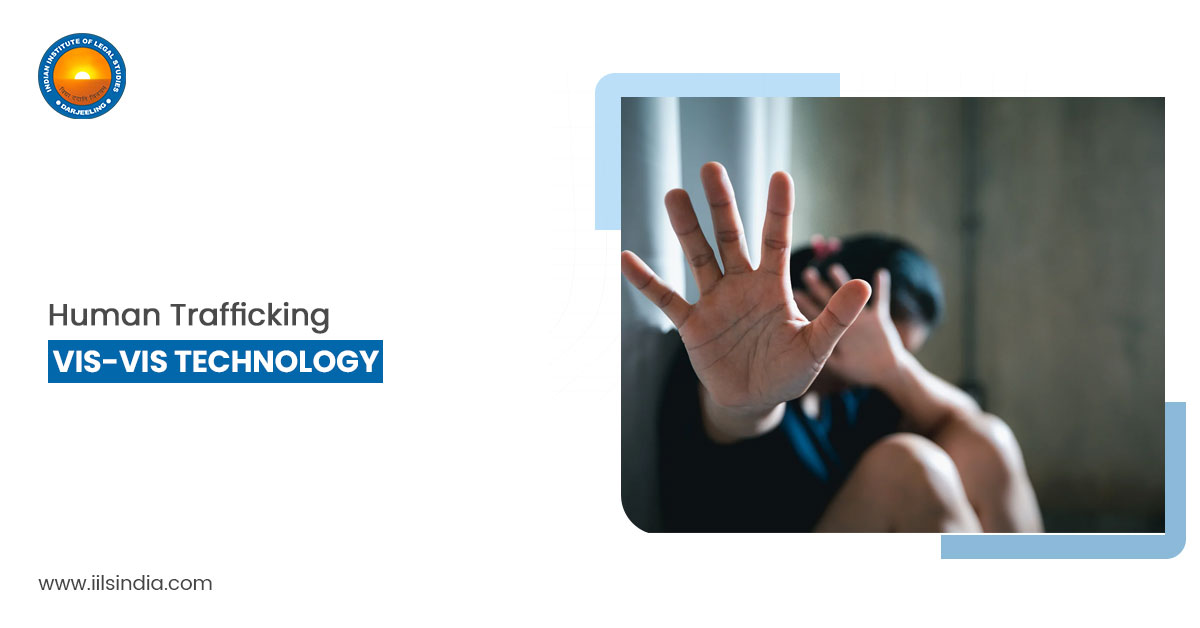Human trafficking is an abhorrent crime against humanity. It is considered an organised crime. Trafficking in human beings is not a new phenomenon. It is the most lucrative criminal activity. It is the third-largest crime committed globally and a growing epidemic. India serves as the country of origin, transit, and destination for human trafficking. As information and communication technology advances, human trafficking perpetrators hide in cyberspace’s anonymity and use cipher text manipulation to their benefit. Technology is considered a bane for the entire human civilization as it has made our lives easier. It has created a virtual space where people can share their thoughts and interact virtually by keeping their identity anonymous which has allowed the free spread of ideas and thoughts. However, there is a darker side to this as well. In the digital age, traffickers mainly operate digitally to recruit, advertise, and exploit the victims. Although there are numerous conventions and laws to deal with the buying and selling of victims, the dynamic and anonymous nature of technology makes it very difficult to trace the offenders and identify the victims. Human trafficking violates basic human rights such as the right to live with dignity, the right to privacy, the right against exploitation, the right to found a family, and freedom from slavery among others. The state and law enforcement agencies take numerous steps to eradicate the heinous crime of human trafficking but technology has added to the complexity of the already existing complex nature of human trafficking. It is a crime with complexity as its nature because it is an organised crime and has different steps involved in it which make identification of all the offenders and rescue of the victims difficult. Many best colleges for law raises awareness among the masses against the dark side of internet in trafficking of humans.
Phases of Human Trafficking and Use of Technology
Human trafficking is a socio-pathological phenomenon, and it is cruel and inhuman. It requires planning and the act of a group of persons acting in concert, which means that there are different stages involved in it. Human trafficking took place in open fields before the development of technology, beginning with the victim’s recruiting and concluding with their transportation to their destinations for exploitation. The task of traffickers has been greatly simplified by technological advancements, as they may now commit crimes with a single click while concealing their identities.
In the recruitment phase, traffickers are far more likely to use “clear net” websites (the surface web or visible websites that are indexed by search engines like Google or Bing), which give them access to a larger audience of internet users who are less likely to have advanced technological knowledge. These websites help dating and other activities which are personal in facilitating the exchange of images, video calls. It also gives a platform to the traffickers where they can get the personal information of the victims. Various social networking applications such as Facebook, Instagram, where people can post photos, can comment on others’ photos, receive private messages and can create numerous fake accounts, it helps the traffickers to identify the potential victim, understand their likes and dislikes, and also monitor them through their updates on these websites. Pieces of information such as contacts, lifestyle habits, location, and images can be accessible to the traffickers by the help of mobile phone applications, social media applications based on the user’s security and privacy setting, and online digital foot print.Various applications like Tinder, Shaadi.com, Bharat Matrimony give a platform to the users to chat with people of match and later meet and date but have no provisions for background checking of users.
According to the Protocol of Palermo, trafficking in human beings includes minimum exploitation for prostitution or other forms of sexual exploitation, removal of organs, forced labour, or servitude. Technology aids in the exploitation of the victims in diverse ways. The demand for online pornographic content is huge, which in turn leads to the supply of pornographic videos on various websites. With the help of the Dark web, videos are uploaded on websites, and it becomes difficult for law enforcement agencies to trace the persons who have uploaded the same. This can result in the trafficking of persons to meet the needs of the pornographic industry. Victims are often threatened, forced and raped to make such videos. They are often coerced into using technology to advertise themselves by displaying their explicit profile photos and videos on websites, online video chats, and dating applications.
Conclusion
To conclude, it can be said that technology should be used wisely and cautiously to prevent its ill effects. Traffickers use technology to lure victims in different so raising awareness is crucial. Many best colleges for law in collaborations with NGOs and legal serviced authorities help to raise awareness against human trafficking vis-à-vis cybercrime.

